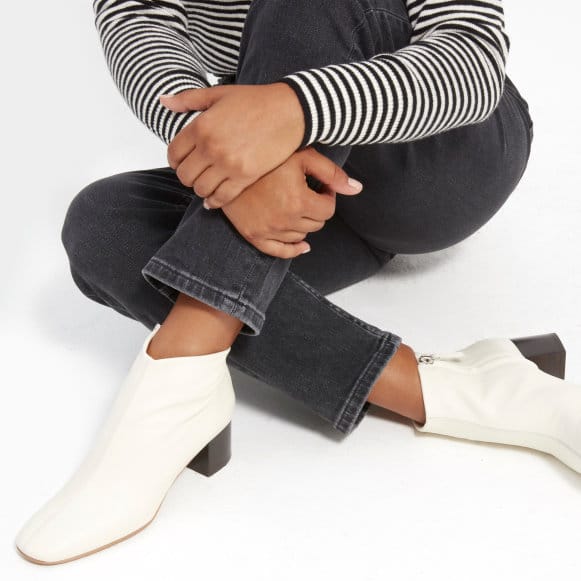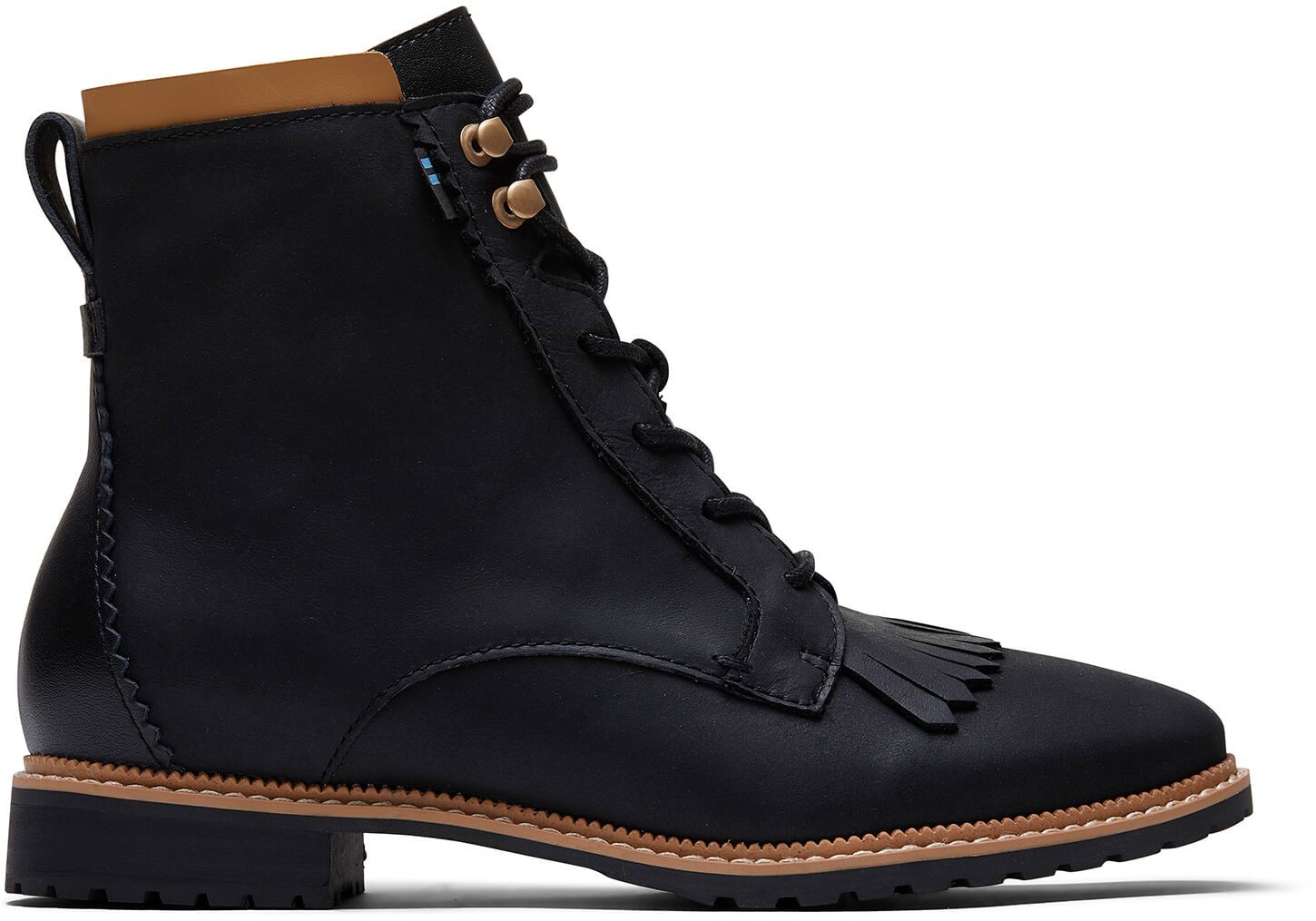Not too long ago, it was pretty difficult to find fall and winter boots that were simultaneously ethically made, durable, affordable and cute. Even just a couple years ago, it seemed like you had to sacrifice one or two of those things and just pick your battles/something you actually like.
But we’re excited about this roundup because of how many brands are now making boots that aren’t made in sweatshops, that will last you a really long time, and that are actually affordable for the modern working woman. Oh, and they’re beautiful and fashionable, too.
What to Look for in a Sustainable, Ethical Autumn Pair of Boots
Quality and durability: A timeless pair of well-made boots should last you a really long time. Not only that, but if you’re going to be trekking around in the fall and winter elements, your shoes need to actually protect and support your feet.
Sustainably-sourced, veggie-tanned leather: A lot of the boots you’ll find at the mall or in Target are made out of faux leather, a.k.a plastic. These boots look and feel cheaper, don’t last as long, and obviously don’t biodegrade. Real leather lasts longer and can endure more weather than other materials, plus won’t harm the earth when you’re done with them. We looked for companies who prioritize the ethical treatment of animals and who don’t process and dye their leather using toxic chemicals.
Other natural materials: We also looked at what other materials were used in addition to leather. Natural rubber, cork, wood, recycled materials, and Piñatex (vegan leather made out of pineapple husks) are all biodegradable and renewable materials you’ll find in the boots below.
Fair wages and transparency: Making a high-quality shoe is an art. And the people who make them should be paid accordingly. These brands are committed to paying their artisans living wages for their work, while also providing other benefits like healthcare and education. Not all of these companies are doing absolutely everything 100% ethically and sustainably — but they’re honest about that and are committed to improving.
Here are our favorite brands for sustainable, ethical boots for fall.
ABLE



ABLE is a brand that invests in women. Their leather boots are handmade in Ethiopia and Peru by women transitioning out of sex work. Their wages are transparently published on their website in order to protect the women makers and empower consumers.
Investment: $75 USD – $200
Nisolo



Nisolo boots are intentionally designed to be versatile and long-lasting. They are ethically made in Peru, Mexico, and Kenya, where all of the artisans earn fair wages, healthcare, and a healthy working environment. They also partner with Ecosphere to offset carbon emissions and protect forests in the Amazon.
Investment: $200 – $250
The Root Collective



The Root Collective’s ankle boots are handcrafted by artisans in Guatemala out of natural leather.
Investment: $248
Timberland



Timberland’s products are made to last a really long time, so you can get the most of out of your boots. The brand is currently working on five sustainability goals for 2020 and is in the process of transitioning out of using plastic materials like PVC and PFC and incorporating more organic, renewable, and recycled materials into all of their products.
Investment: $90 – $400
Coclico



Coclico is committed to slow fashion and transparent production. Their boots are handmade in Spain from carefully sourced Italian leather and they partner with Native Energy to offset the carbon emissions used in production.
Investment: $375 – $450
Everlane



Everlane partners with the most ethical factories they can find around the globe in order to ensure the makers are being paid fairly while also providing the most affordable and transparent pricing for customers. You can even check out the exact factory where your boots were made.
Investment: $200 – $235
Adelante Shoe Co.



With a made-to-order model that delivers you a personalized pair of sandals directly from Guatemala within 10 days, Adelante provides ethically made boots out of high-quality leather. You can read more about your craftsmen and women on their website.
Investment: $245 – $325
Fortress of Inca



Fortress of Inca shoes are made by fairly-paid artisans in Peru out of ethically-sourced leather. They prioritize quality and craftsmanship by partnering with family-owned and operated factories and workshops and design their boots to stand the test of time.
Investment: $240 – $275
Huma Blanco



Huma Blanco shoes are designed by Adriana Crocco, a third generation shoemaker and designer based in Lima, Peru.Alden actually visited this factory herself and saw the artisanship in person! They’re made from locally-sourced, natural Peruvian materials such as suede, alpaca, and calf hair, and colored with natural dyes.
Investment: $300 – $410
No. 6



No. 6 boots are made by hand in New York City out of natural materials like leather and wood. They are designed to be worn over and over again and easily complement a woman’s entire wardrobe.
Investment: $390 – $425
Red Wing Shoe Company



Red Wing Shoe Company has been making high-quality, long-lasting leather boots in the USA for over 110 years. The company was originally created to deliver “ladies’ boots” to independent women that had the same durability and craftsmanship found in men’s boots.
Investment: $320 – $360
LD Tuttle



LD Tuttle boots are handcrafted in Italy by third generation artisans out of 100% calfskin leather.
Investment: $250 – $780
Sydney Brown



Sydney Brown uses sustainable materials like cork, recycled fibers, and sustainably harvested German beech wood in their shoes. The synthetic material used is made from renewable resources like grains and vegetable seeds and they are committed to reducing their manufacturing environmental impact as much as possible.
Investment: $365 – $440
Poppy Barley



Poppy Barley boots are made from 100% leather and rubber. They are in the process of becoming B Corp certified and provide transparent information about their factories on each product page. You can learn about the status of all of their sustainability initiatives on their site.
Investment: $350 – $550
TOMS



TOMS has upped its game since they first came on the scene with their not-so-high-quality slip-ons. They still partner with organizations that fight for things like equality, safe drinking water, and other resources to underprivileged people all around the world. They use eco-friendly materials like leather, certified leather, hemp, organic cotton, and recycled polyester in many of their shoes, and their boxes are made with recycled waste and soy ink. They’re a certified B Corp as well.
Investment: $90 – $160
thredUP



One of the most sustainable ways to get affordable sustainable clothing is to go secondhand! No new resources are needed to make something, you’re keeping old clothes out of the landfill or being shipping overseas, and it’s essentially recycling your clothes. I’ve heard that it’s rather difficult to find plus-size clothing in thrift stores, but online, you just have to check a box and, boom, it’s all sorted for you. thredUP is one of the largest online secondhand platforms.
Investment: $10 – $2,000
TheRealReal



TheRealReal is an authenticated online consignment shop that carries the biggest luxury brands out there. Their 100+ in-house expert team includes luxury brand authenticators who inspect thousands of items every day, ensuring everything they sell is 100% authenticity guaranteed. They also teamed up with the Ellen McArthur Foundation, Stella McCartney, and the World Resources Institute to create a one-of-a-kind circularity calculator to keep track of how much water and CO2 have been saved through their job, just by consumers shopping secondhand.
Investment: $30 – $4,000
Vestiaire Collective



Vestiaire Collective is another one of the largest online secondhand websites where you can find affordable options from luxury brands. They have quite a wide selection, but their website makes it easy to sort by brand, size, color, material, and more.
Investment: $20 – $7,000

The post The Best Eco-Friendly, Ethical Boots for Fall appeared first on Ecocult.
from Ecocult https://ift.tt/2RelhG3 https://ift.tt/2nGMVkG
Comments
Post a Comment